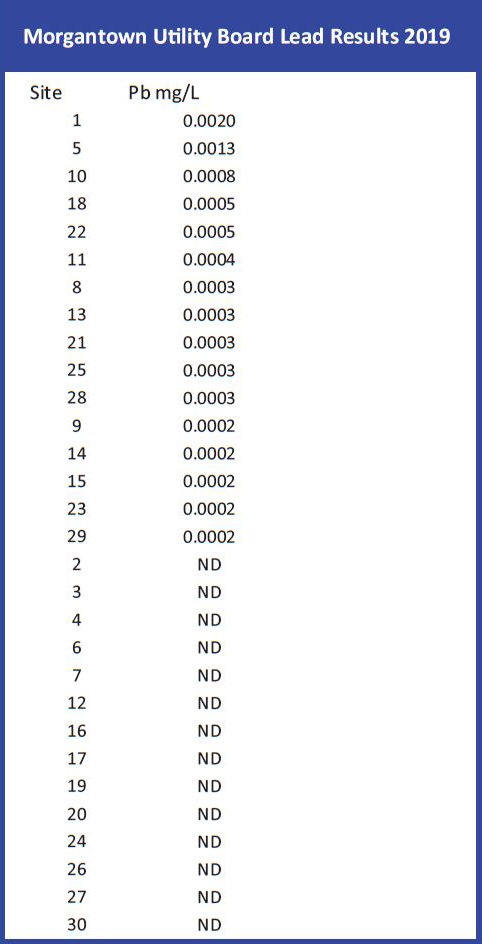Morgantown Utility Board Lead Results 2019
Lead and copper analysis is performed once every three (3) years, on water samples throughout our water distribution system. Our analysis for 2019 showed that the 90th percentile of the ranked analysis results were, 0.8 ppb for lead and 0.0152 ppm for copper. All results were found to be well below the action levels as set by our state health department. Our next scheduled sampling for lead and copper is set for 2022. Information on our efforts to reduce the potential for lead contamination may be found at https://mub.org/lead.
If present, elevated levels of lead can cause serious health problems, especially for pregnant women and young children. Lead in drinking water is primarily from materials and components associated with service lines and home plumbing. The system is responsible for providing high quality drinking water, but can not control the variety of materials used in plumbing components. When your water has been sitting for several hours, you can minimize the potential for lead exposure by flushing your tap water 30 seconds to two minutes before using water for drinking or cooking. If you are concerned about lead in your drinking water, you may wish to have your water tested. Information on lead in drinking water, testing methods and steps you can take to minimize exposure is available from Safe Drinking Water Hotline or at http://www.epa.gov/safewater/lead.
The below table is also available in PDF format via Dropbox by clicking here.
Please note that "ND" is Non-Detectable which means the result is below the method detection limit.
